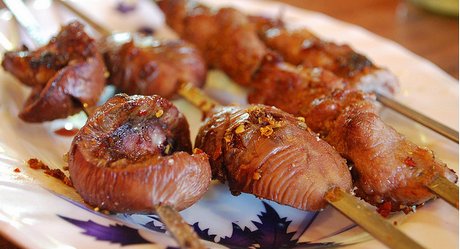What Is Manganese?
Manganese (Mn) is a mineral element that is nutritionally important in the body yet is potentially toxic. It is present in the body in tiny amounts and is commonly found in bones, kidneys, liver and pancreas.
This essential mineral aids the body in forming connective tissues, blood clotting hormones, bones, and sex hormones.
Manganese also plays a role in the metabolism of carbohydrates and fat as well as the absorption of calcium and blood sugar regulation. Health experts have found out that manganese is also required in having normal nerve and brain function.
Superoxide dismutase
One of the components of the antioxidant enzyme superoxide dismutase (SOD) is manganese. This enzyme is needed in fighting against free radicals that are naturally occurring in the body but damages DNA and cell membranes. Manganese superoxide dismutase and other antioxidants can help in neutralize free radicals and reducing the risk of having the damages that they bring. Some of its roles include:
- Development of bones – deficiency of manganese results in having abnormal skeletal developments. This is because manganese is the cofactor of glycosyltransferases enzymes that are required in the synthesis of proteoglycans. Proteoglycans are essential in the formation of healthy bones and cartilage.
- Metabolism – several manganese-activated enzymes have significant roles in the metabolism of cholesterol, amino acids and carbohydrates. The manganese-containing enzyme known as Pyruvate carboxylase, and manganese-activated enzyme phosphoenolpyruvate carboxykinase (PEPCK), are vital in the process of gluconeogenesis, which is the glucose production from non-carbohydrate precursors. Glutamine synthetase, the manganese-activated enzyme in the brain converts the amino acid glutamate into glutamine. Another manganese-containing enzyme, referred as Arginase is needed by the liver for the process of detoxifying ammonia generated during amino acid metabolism, also called as the urea cycle.
- Antioxidant function – the main antioxidant enzyme in the mitochondria is the Manganese superoxide dismutase (MnSOD) that is responsible in catalyzing the conversion of superoxide radicals to hydrogen peroxide that can be reduced by other antioxidant enzymes into water.
- Wound healing – this is a complex process that is need of an increased collagen production. Manages is essential for the activation of the enzyme prolidase that functions in providing proline (an amino acid) for the formation of collagen in human skin cells. Abnormal wound healing is due to the genetic disorder called as prolidase, and is characterized by having an abnormal metabolism of manganese. Manganese-activated glycosyltransferases is required in the process of glycosaminoglycan synthesis, which also plays a role in wound healing.
Manganese deficiency
Insufficient consumption of manganese can result to deficiency symptoms such as fainting, ataxia, weak ligaments and tendons, hearing loss, and can also be a possible cause of diabetes. Recent studies have indicated that manganese deficiency also impairs the metabolism of glucose and reduced production of insulin. Myasthenia gravis is another disease that has been linked to manganese deficiency. This disease is a loss of muscle strength as a consequence of lack of choline utilization, thus reduces acetylcholine synthesis. Since Zinc and manganese therapy can help reduce copper levels in the body, they are both used in treatment of symptoms due to excess copper.
Manganese toxicity
However, excessive intake of the mineral can lead to manganese toxicity. Neurological disorders such as Parkinson’s disease are associated with having abnormal manganese concentrations in the brain, particularly in the basal ganglia. Infant or young kids’ exposure to high levels of manganese can have severe impact on neurodevelopment. Poor cognitive performances among school children can also arise due to elevated manganese in the body.
The manganese RDA is as follows:
|
AGE |
FEMALES (mg/day) |
MALES (mg/day) |
| 0 to 6 months | 0.003 | 0.003 |
| 7 to 12 months | 0.6 | 0.6 |
| 1 to 3 years | 1.2 | 1.2 |
| 4 to 8 years | 1.5 | 1.5 |
| 9 to 13 years | 1.6 | 1.9 |
| 14 to 18 years | 1.6 | 2.2 |
| 19 years and older | 1.8 | 2.3 |
| Pregnant (all ages) | 2.0 | – |
| Lactating (all ages) | 2.6 | – |
Manganese rich foods
Kidneys and livers are the primary meat source of manganese.

Other manganese rich foods include wheat germ, wheat bran, oyster, rolled oats, cheese, fish, cereals, soybeans, cottage cheese, parsley, turkey, pulses, black tea, legumes, nuts, berries, white bread, mushrooms, potatoes, pasta, whole milk, chicken, turkey, almonds, pineapple, spinach, sweet potatoes and fruits.
References and Further Reading
Kidney Skewer Photograph by Avlxyz. Oregon State; Maryland.

